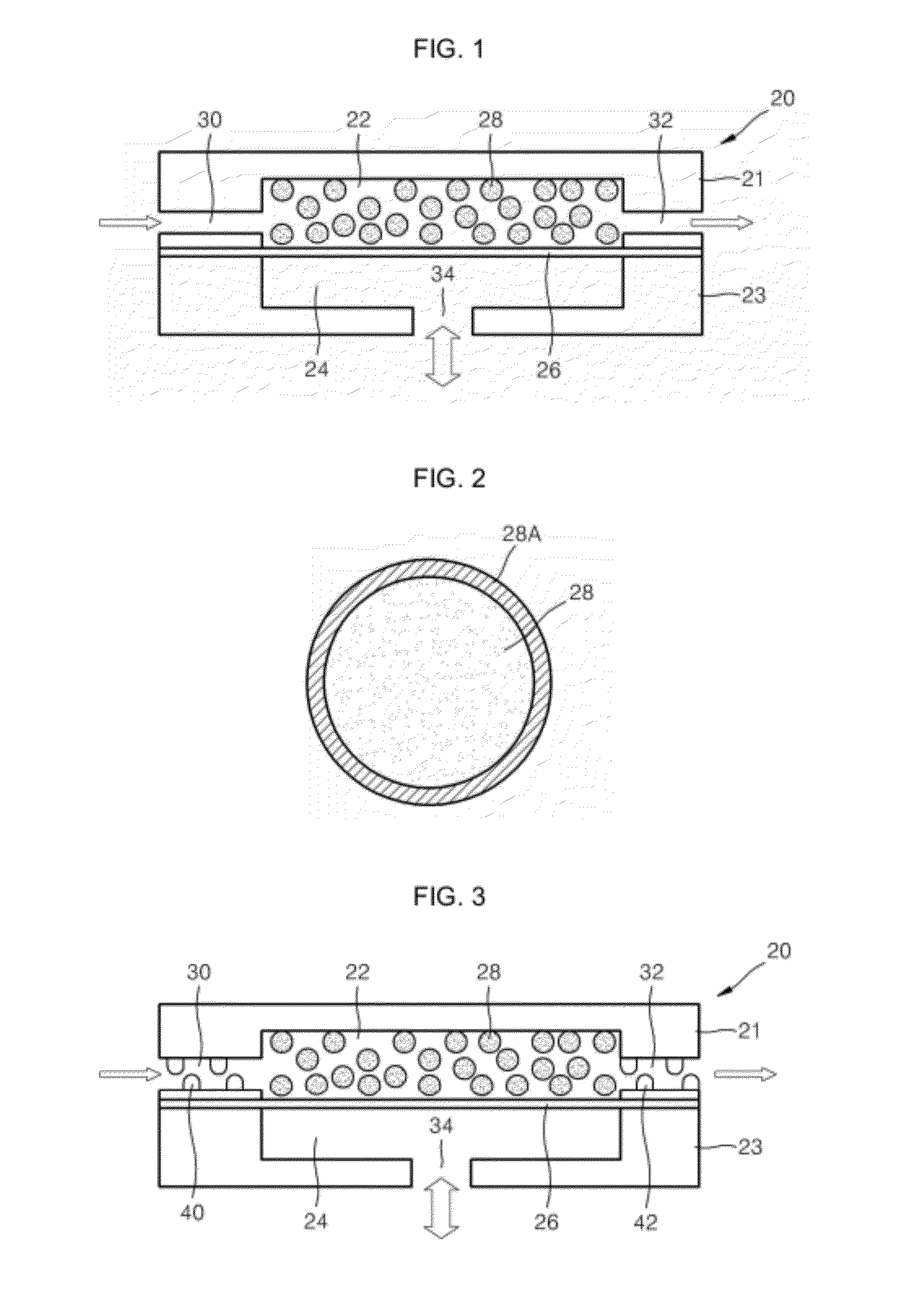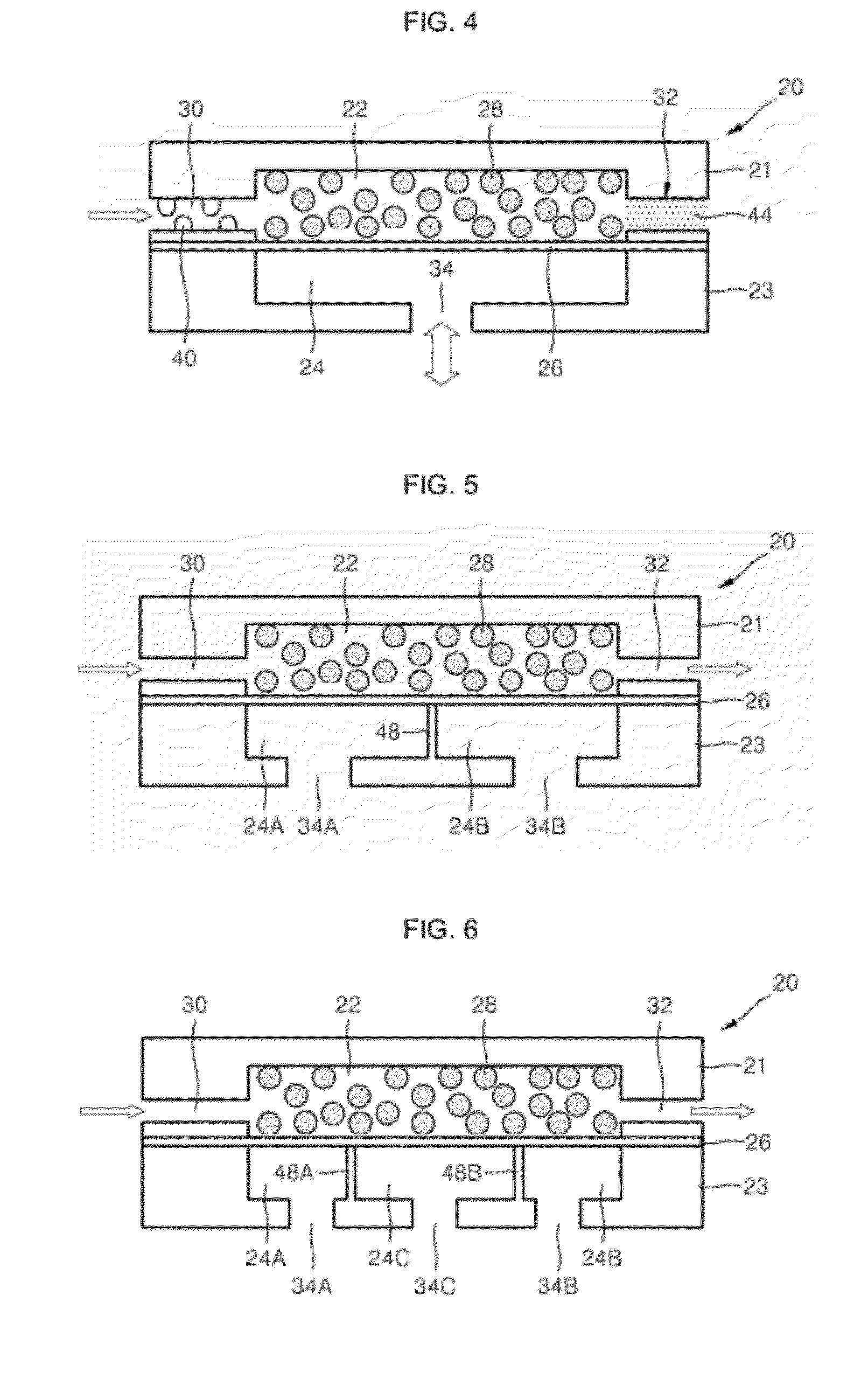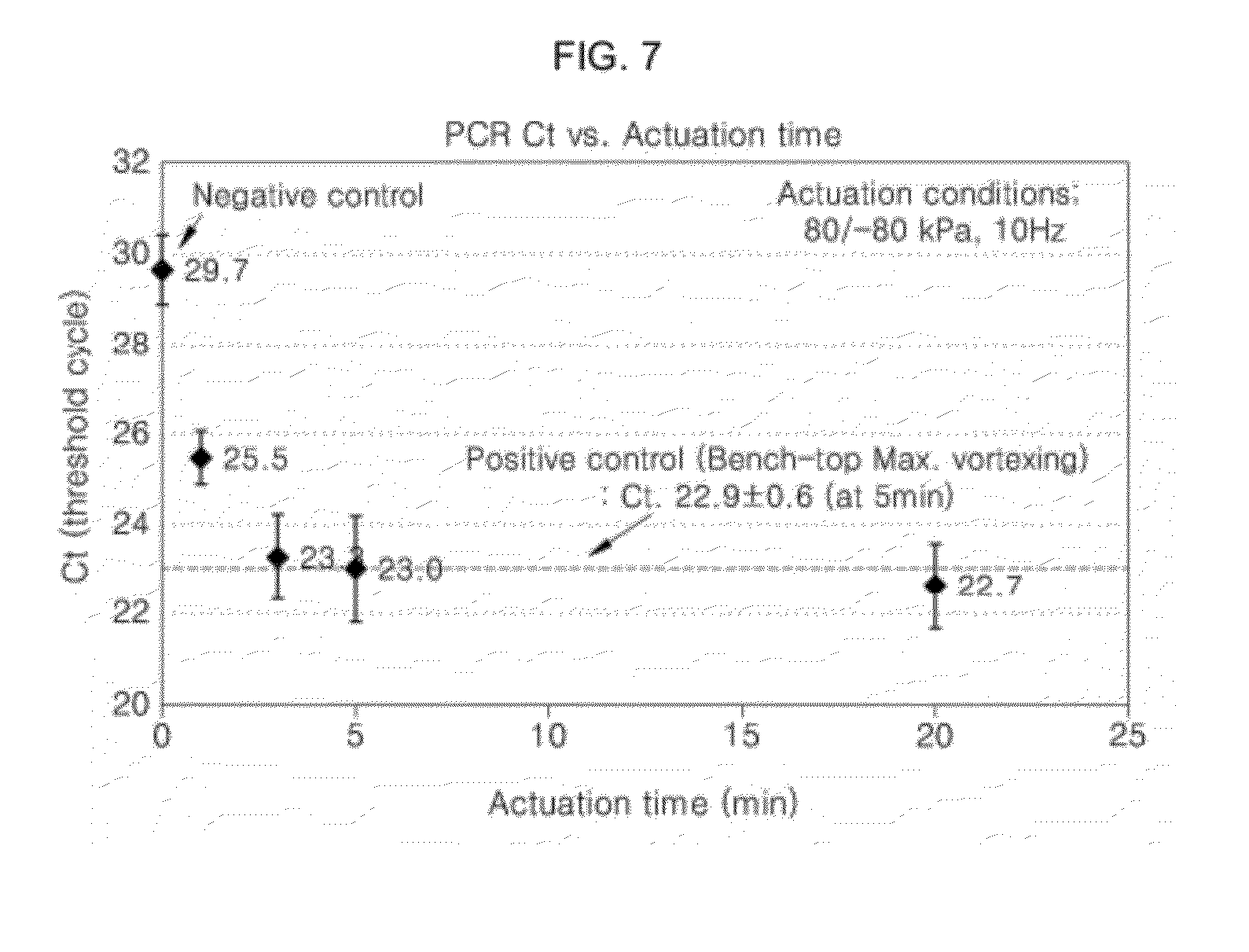Micro-device and methods for disrupting cells
a micro-device and cell technology, applied in biochemical apparatus and processes, specific use bioreactors/fermenters, after-treatment of biomass, etc., can solve the problem that the sample preparation process for obtaining a nucleic acid suitable for pcr from a raw sample has not been effectively integrated into the entire analysis process on a microchip, and achieves the effect of facilitating cell disruption
- Summary
- Abstract
- Description
- Claims
- Application Information
AI Technical Summary
Benefits of technology
Problems solved by technology
Method used
Image
Examples
example
1. Manufacture of a Micro-Device
[0081]A micro-device having three layers (e.g., glass layer-PDMS layer-glass layer) was manufactured. A channel and a chamber were formed on the glass wafer through conventional photographic and etching processes and a wet etching process.
[0082]After cleaning a 6 inch glass wafer (borosilicate glass, 700 um thickness) in a Piranha solution, e.g., a mixture of sulfuric acid (H2SO4) and hydrogen peroxide (H2O2), an amorphous polysilicon layer was vapor-deposited on the cleaned glass wafer to a thickness of 2000 um. Then, a patterning process was implemented, in which a part of the vapor-deposited polysilicon layer is exposed using a photoresist film. Then, the exposed part of the polysilicon layer was removed by dry etching. Thereafter, the photoresist film was stripped, and the exposed glass wafer was wet etched with a hydrofluoric acid solution (HF, 49%) to form a channel having a depth of 100 um and a width of 100 um. In the etching process to form t...
PUM
| Property | Measurement | Unit |
|---|---|---|
| diameter | aaaaa | aaaaa |
| density | aaaaa | aaaaa |
| thickness | aaaaa | aaaaa |
Abstract
Description
Claims
Application Information
 Login to View More
Login to View More - R&D
- Intellectual Property
- Life Sciences
- Materials
- Tech Scout
- Unparalleled Data Quality
- Higher Quality Content
- 60% Fewer Hallucinations
Browse by: Latest US Patents, China's latest patents, Technical Efficacy Thesaurus, Application Domain, Technology Topic, Popular Technical Reports.
© 2025 PatSnap. All rights reserved.Legal|Privacy policy|Modern Slavery Act Transparency Statement|Sitemap|About US| Contact US: help@patsnap.com



